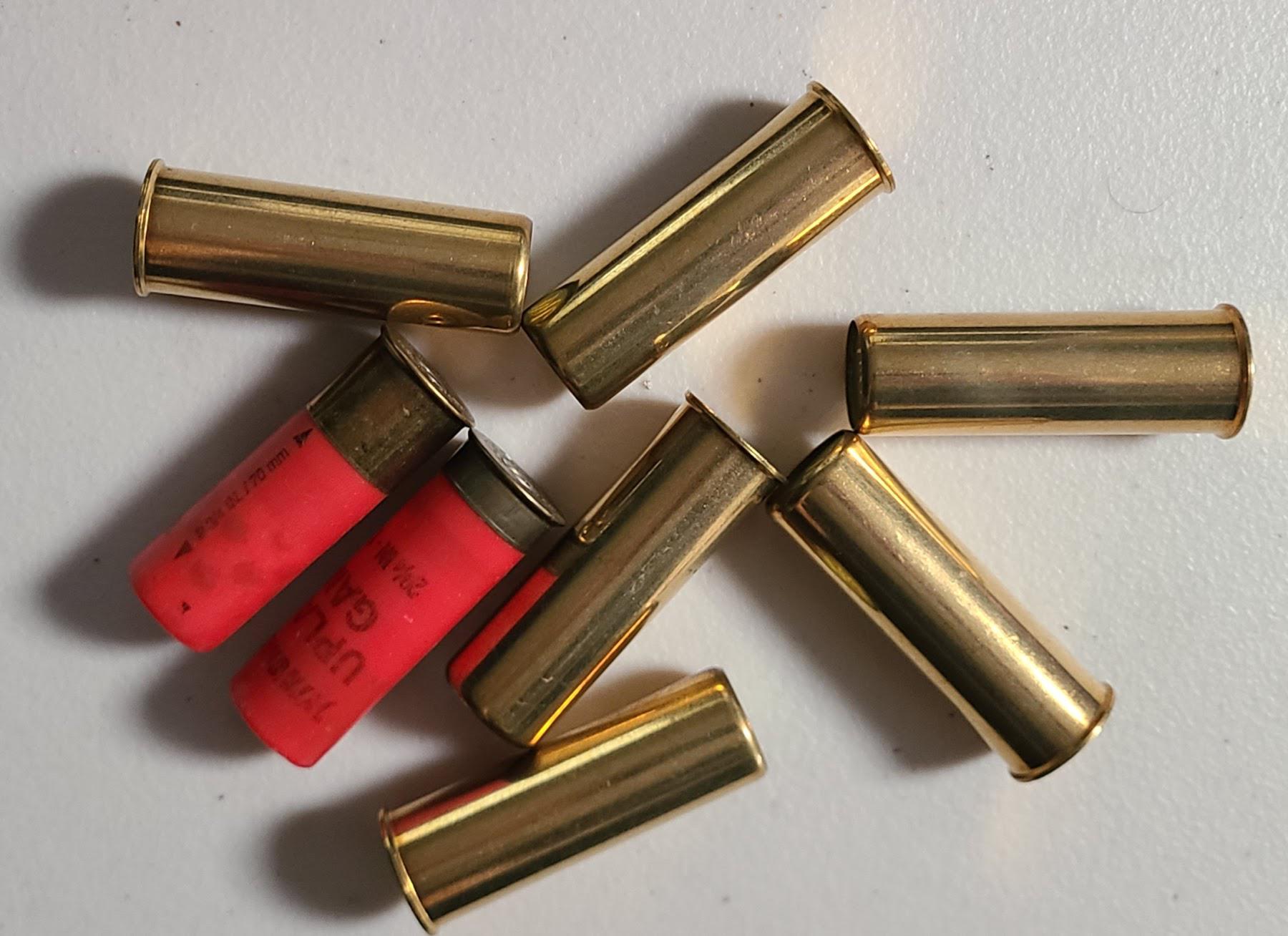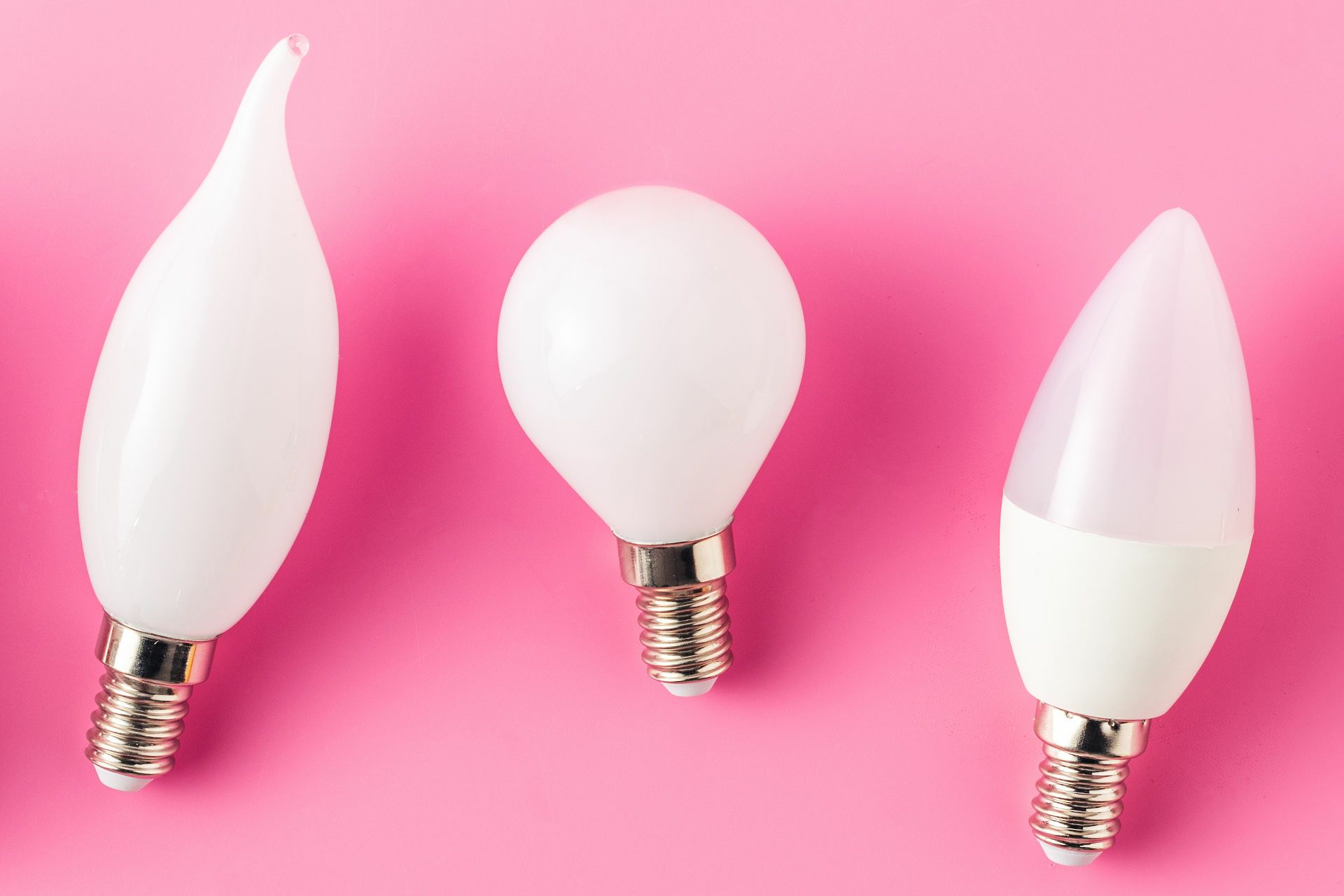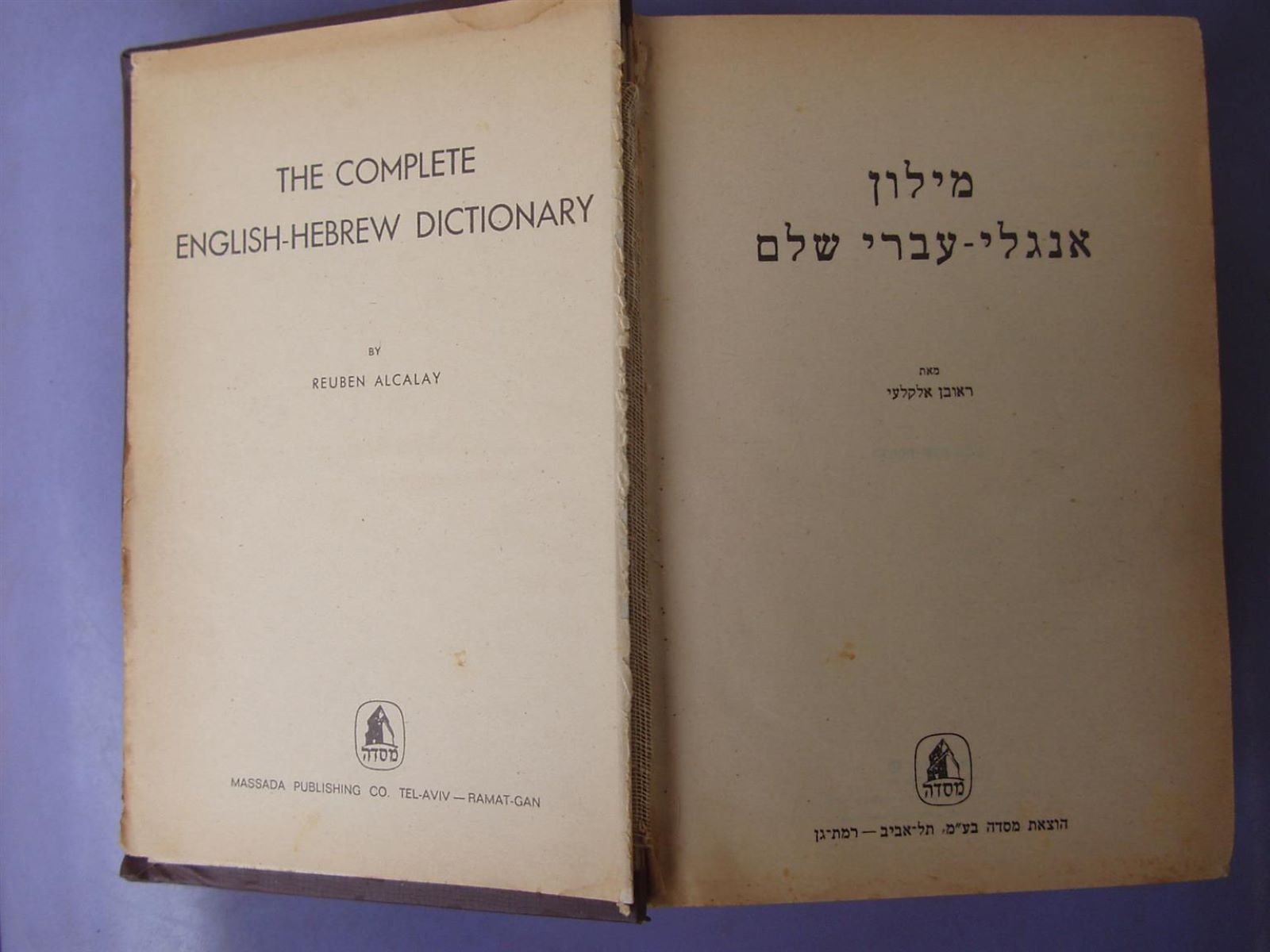Home>Sports>The Surprising Difference Between Low Brass And High Brass Shotgun Shells Revealed!


Sports
The Surprising Difference Between Low Brass And High Brass Shotgun Shells Revealed!
Published: February 11, 2024
Discover the key distinctions between low brass and high brass shotgun shells in sports. Uncover the surprising differences that impact your shooting experience!
(Many of the links in this article redirect to a specific reviewed product. Your purchase of these products through affiliate links helps to generate commission for Regretless.com, at no extra cost. Learn more)
Table of Contents
- Introduction
- What are low brass and high brass shotgun shells?
- The history of low brass and high brass shotgun shells
- The differences in construction between low brass and high brass shotgun shells
- The performance differences between low brass and high brass shotgun shells
- The cost differences between low brass and high brass shotgun shells
- Conclusion
Introduction
Shotgun enthusiasts and hunters often encounter the terms "low brass" and "high brass" when selecting ammunition for their firearms. These designations, often found on the base of shotgun shells, carry significant implications for performance, cost, and practical application. Understanding the differences between low brass and high brass shotgun shells is essential for making informed decisions in the field or at the shooting range. In this comprehensive guide, we will delve into the intriguing world of shotgun ammunition, uncovering the surprising disparities between low brass and high brass shotgun shells.
Whether you are a seasoned shotgun aficionado or a novice enthusiast, this exploration will shed light on the intricate details that set these two types of shotgun shells apart. From their historical origins to the nuanced variations in construction and performance, we will dissect the characteristics of low brass and high brass shotgun shells. Additionally, we will examine the practical implications of these differences, including their respective costs and suitability for specific shooting activities.
By the end of this journey, you will emerge with a profound understanding of the distinctions between low brass and high brass shotgun shells, empowering you to make well-informed choices when selecting ammunition for your shotgun. Let's embark on this enlightening expedition into the realm of shotgun ammunition, where the mysteries of low brass and high brass shotgun shells will be unraveled before your eyes.
What are low brass and high brass shotgun shells?
Low brass and high brass shotgun shells are distinct categories of shotgun ammunition distinguished by the design of their metal bases. The terms "low brass" and "high brass" refer to the height of the brass base that holds the primer and the gunpowder charge within the shotgun shell.
Low brass shotgun shells feature a base with a relatively shallow brass height, while high brass shotgun shells are characterized by a significantly taller brass base. This differentiation in brass height is visually apparent when comparing the two types of shotgun shells side by side.
The designation of "brass" in low brass and high brass shotgun shells is somewhat misleading, as the material used in the base can vary. While traditional shotgun shells historically featured brass bases, modern iterations may utilize steel or other metals. However, the terms "low brass" and "high brass" persist as a nod to the historical association with brass material.
These distinctions in brass height are not merely cosmetic; they carry implications for the performance and cost of the shotgun shells. Understanding the characteristics of low brass and high brass shotgun shells is vital for selecting the most suitable ammunition for specific shooting activities, whether it be hunting, sport shooting, or competitive shooting events.
As we delve deeper into the world of shotgun ammunition, we will uncover the historical origins of low brass and high brass shotgun shells, explore the differences in their construction, dissect their performance disparities, and examine the cost implications associated with these two distinct categories of shotgun shells. This comprehensive exploration will illuminate the nuanced intricacies of low brass and high brass shotgun shells, providing valuable insights for shotgun enthusiasts and hunters alike.
The history of low brass and high brass shotgun shells
The history of low brass and high brass shotgun shells is deeply intertwined with the evolution of shotgun ammunition and the diverse needs of shooters and hunters. The distinction between low brass and high brass shotgun shells dates back to the 19th century, a pivotal era marked by significant advancements in firearms and ammunition technology.
During the early years of shotgun development, ammunition manufacturers sought to optimize the performance of shotgun shells for various shooting applications. This quest for enhancement led to the introduction of low brass and high brass shotgun shells, each tailored to meet specific demands in the field.
Low brass shotgun shells emerged as a response to the need for lighter loads and reduced recoil. By employing a base with minimal brass height, ammunition manufacturers were able to create shotgun shells that delivered gentler recoil, making them well-suited for activities such as skeet shooting, trap shooting, and recreational target shooting. The reduced weight of the shot charge in low brass shotgun shells also contributed to their popularity among shooters seeking a more manageable shooting experience.
In contrast, high brass shotgun shells were developed to accommodate heavier shot charges and provide enhanced performance for hunting and long-range shooting. The taller brass base of high brass shotgun shells facilitated the use of larger powder charges and increased shot payloads, catering to the requirements of hunters pursuing game birds, waterfowl, and upland game. The robust construction of high brass shotgun shells allowed for greater versatility and effectiveness in diverse hunting scenarios, cementing their status as a staple in the ammunition repertoire of hunters worldwide.
The historical significance of low brass and high brass shotgun shells is underscored by their enduring relevance in contemporary shooting culture. Despite the advent of modern materials and manufacturing techniques, the fundamental principles that underpin low brass and high brass shotgun shells continue to shape the landscape of shotgun ammunition.
As we navigate the rich tapestry of shotgun history, the evolution of low brass and high brass shotgun shells stands as a testament to the ingenuity and adaptability of ammunition designers. The legacy of these distinctive shotgun shells endures, serving as a testament to the enduring legacy of innovation and practicality in the realm of shotgun ammunition.
The differences in construction between low brass and high brass shotgun shells
The construction of low brass and high brass shotgun shells encompasses a range of intricate details that significantly influence their performance and practical applications. While both types of shotgun shells serve as vessels for propelling shot or slugs from a shotgun, their distinct construction sets them apart in terms of power, recoil, and versatility.
Low brass shotgun shells are characterized by a base with a shallow brass height, typically accompanied by a smaller powder charge and shot payload. This design allows for a lighter overall weight, making low brass shotgun shells well-suited for activities such as skeet shooting, trap shooting, and recreational target shooting. The reduced recoil produced by low brass shotgun shells enhances shooter comfort and facilitates rapid follow-up shots, contributing to their popularity in competitive shooting events and casual shooting endeavors.
In contrast, high brass shotgun shells feature a significantly taller brass base, accommodating larger powder charges and heavier shot payloads. The robust construction of high brass shotgun shells enables them to deliver higher muzzle energy and enhanced downrange performance, making them indispensable for hunting a diverse range of game birds, waterfowl, and upland game. The increased powder capacity of high brass shotgun shells empowers them to propel larger shot sizes at greater velocities, providing hunters with the necessary firepower to effectively pursue game in various hunting scenarios.
Additionally, the differences in construction between low brass and high brass shotgun shells extend to their structural integrity and resilience. High brass shotgun shells, with their sturdier base construction, are engineered to withstand the higher pressures generated by heavier powder charges, ensuring reliable performance and safety during firing. On the other hand, the lighter construction of low brass shotgun shells caters to the specific requirements of recreational and competitive shooting, prioritizing maneuverability and reduced recoil over sheer power and durability.
Understanding the nuanced disparities in construction between low brass and high brass shotgun shells is essential for selecting the most suitable ammunition for specific shooting activities. Whether it involves pursuing game in the field, honing shooting skills on the range, or engaging in competitive shooting disciplines, the distinct construction of low brass and high brass shotgun shells plays a pivotal role in shaping their performance characteristics and practical utility.
The performance differences between low brass and high brass shotgun shells
The performance disparities between low brass and high brass shotgun shells are profound, encompassing a spectrum of factors that directly impact their effectiveness in the field and at the shooting range. These differences manifest in terms of muzzle velocity, energy delivery, pattern density, and terminal ballistics, ultimately shaping the practical applications and suitability of each type of shotgun shell.
Low brass shotgun shells, with their lighter shot charges and reduced powder capacity, exhibit lower muzzle velocities compared to high brass counterparts. This characteristic makes them well-suited for close-range shooting activities such as skeet shooting and trap shooting, where moderate velocities and manageable recoil are desirable. The gentler recoil produced by low brass shotgun shells contributes to improved shooter comfort and facilitates rapid follow-up shots, enhancing performance in dynamic shooting scenarios.
In contrast, high brass shotgun shells harness their robust construction and larger powder charges to achieve higher muzzle velocities and increased energy delivery. This heightened performance is particularly advantageous for hunting applications, where the ability to effectively engage game birds and waterfowl at extended ranges is essential. The enhanced downrange energy of high brass shotgun shells translates into improved terminal ballistics, ensuring greater lethality and a more decisive impact on target game.
Pattern density, a critical aspect of shotgun shell performance, is influenced by the shot charge and the velocity at which it is propelled. Low brass shotgun shells, tailored for close-range shooting, typically yield wider shot patterns, making them conducive to engaging fast-moving targets in confined shooting environments. On the other hand, high brass shotgun shells, with their greater muzzle velocities and tighter shot patterns, excel in delivering concentrated firepower at longer distances, enhancing their effectiveness in hunting scenarios that demand precision and reach.
The performance disparities between low brass and high brass shotgun shells extend beyond raw ballistic metrics, encompassing the practical implications of their respective capabilities. Whether it involves achieving consistent scores in competitive shooting disciplines or securing successful harvests in the field, the nuanced performance disparities between low brass and high brass shotgun shells play a pivotal role in shaping the outcomes of shooting endeavors.
Understanding these performance differences is paramount for discerning shooters and hunters seeking to optimize their ammunition selection based on the specific demands of their shooting activities. By leveraging the distinct performance characteristics of low brass and high brass shotgun shells, shooters and hunters can elevate their shooting experiences and achieve superior results in the pursuit of their shooting passions.
The cost differences between low brass and high brass shotgun shells
The cost disparities between low brass and high brass shotgun shells encompass a multifaceted interplay of factors that directly influence the affordability and accessibility of these two distinct categories of shotgun ammunition. While both low brass and high brass shotgun shells serve as essential components of a shooter's or hunter's arsenal, their differing cost profiles reflect the nuanced trade-offs between performance, practical application, and economic considerations.
Low brass shotgun shells, characterized by their lighter shot charges and reduced powder capacity, typically offer a more cost-effective option for shooters engaged in recreational and competitive shooting activities. The minimal brass height of low brass shotgun shells translates into a streamlined manufacturing process, resulting in lower production costs. This cost efficiency is reflected in the retail pricing of low brass shotgun shells, making them an attractive choice for shooters seeking affordable ammunition without compromising on quality and reliability.
In contrast, high brass shotgun shells, with their robust construction and larger powder charges, often command a higher price point due to the increased material and manufacturing costs associated with their production. The taller brass base of high brass shotgun shells necessitates the use of additional materials and intricate manufacturing techniques, contributing to a comparatively higher retail price. While the enhanced performance and versatility of high brass shotgun shells justify their premium pricing for hunters pursuing game birds, waterfowl, and upland game, the elevated cost may present a consideration for shooters seeking economical options for recreational and competitive shooting endeavors.
The cost disparities between low brass and high brass shotgun shells are further influenced by market dynamics, supply chain factors, and regional variations in pricing. Additionally, the availability of bulk purchasing options and promotional deals can impact the overall cost-effectiveness of both types of shotgun shells, offering shooters and hunters opportunities to optimize their ammunition procurement based on their specific budgetary constraints and shooting requirements.
By understanding the cost differences between low brass and high brass shotgun shells, shooters and hunters can make informed decisions when selecting ammunition that aligns with their financial considerations and shooting objectives. Whether it involves optimizing the cost-effectiveness of ammunition for regular range sessions or securing affordable yet reliable options for hunting pursuits, the nuanced cost disparities between low brass and high brass shotgun shells provide valuable insights for individuals seeking to balance performance and affordability in their ammunition choices.
Conclusion
In conclusion, the distinctions between low brass and high brass shotgun shells are far more than superficial design variations; they encompass a rich tapestry of historical significance, nuanced construction disparities, profound performance differences, and cost implications. The exploration of these two categories of shotgun ammunition has unveiled a captivating narrative that underscores their diverse roles in the realm of shooting sports and hunting pursuits.
The historical origins of low brass and high brass shotgun shells reflect the ingenuity and adaptability of ammunition designers in meeting the evolving needs of shooters and hunters. From the quest for reduced recoil in low brass shotgun shells to the pursuit of enhanced downrange performance in high brass counterparts, the historical trajectory of these distinctive shotgun shells resonates with the enduring legacy of innovation and practicality in the realm of shotgun ammunition.
The differences in construction between low brass and high brass shotgun shells underscore their tailored suitability for specific shooting activities. Whether it involves the maneuverability and reduced recoil of low brass shotgun shells in recreational and competitive shooting or the robustness and firepower of high brass shotgun shells in diverse hunting scenarios, the distinct construction of these shotgun shells shapes their performance characteristics and practical utility.
The performance disparities between low brass and high brass shotgun shells encompass a spectrum of factors, including muzzle velocity, energy delivery, pattern density, and terminal ballistics. These performance differences directly influence the effectiveness of each type of shotgun shell in the field and at the shooting range, playing a pivotal role in shaping the outcomes of shooting endeavors and hunting pursuits.
Furthermore, the cost disparities between low brass and high brass shotgun shells provide valuable insights for shooters and hunters seeking to balance performance and affordability in their ammunition choices. The economic considerations associated with these two distinct categories of shotgun ammunition reflect the multifaceted interplay of market dynamics, supply chain factors, and regional variations in pricing, empowering individuals to make informed decisions based on their specific budgetary constraints and shooting objectives.
In essence, the surprising difference between low brass and high brass shotgun shells transcends their physical appearances, offering a captivating narrative that intertwines historical evolution, nuanced construction, profound performance disparities, and cost implications. By unraveling the mysteries of low brass and high brass shotgun shells, shooters and hunters can embark on an enlightening journey that enriches their understanding of shotgun ammunition and empowers them to make well-informed choices in their shooting endeavors.














